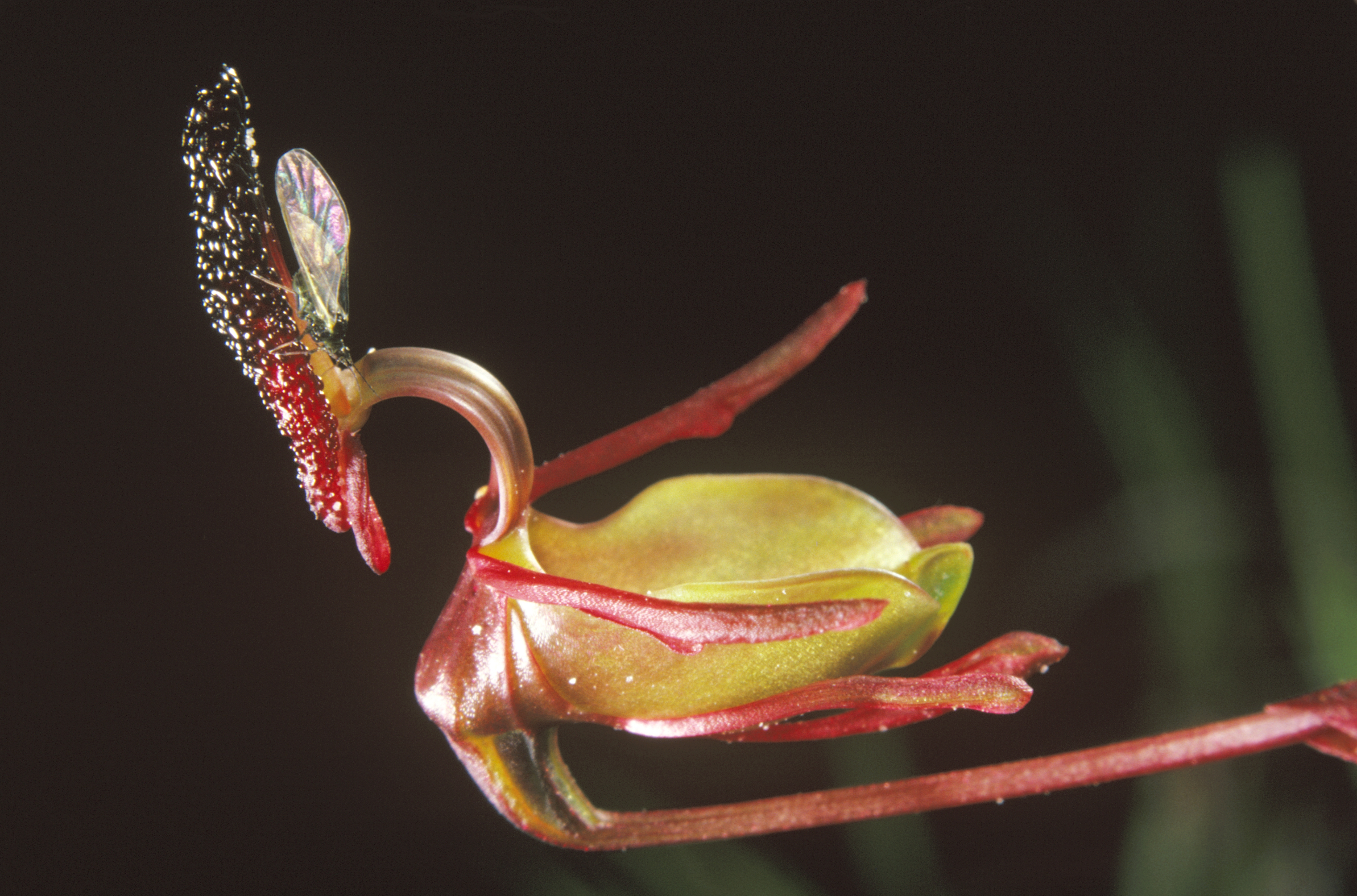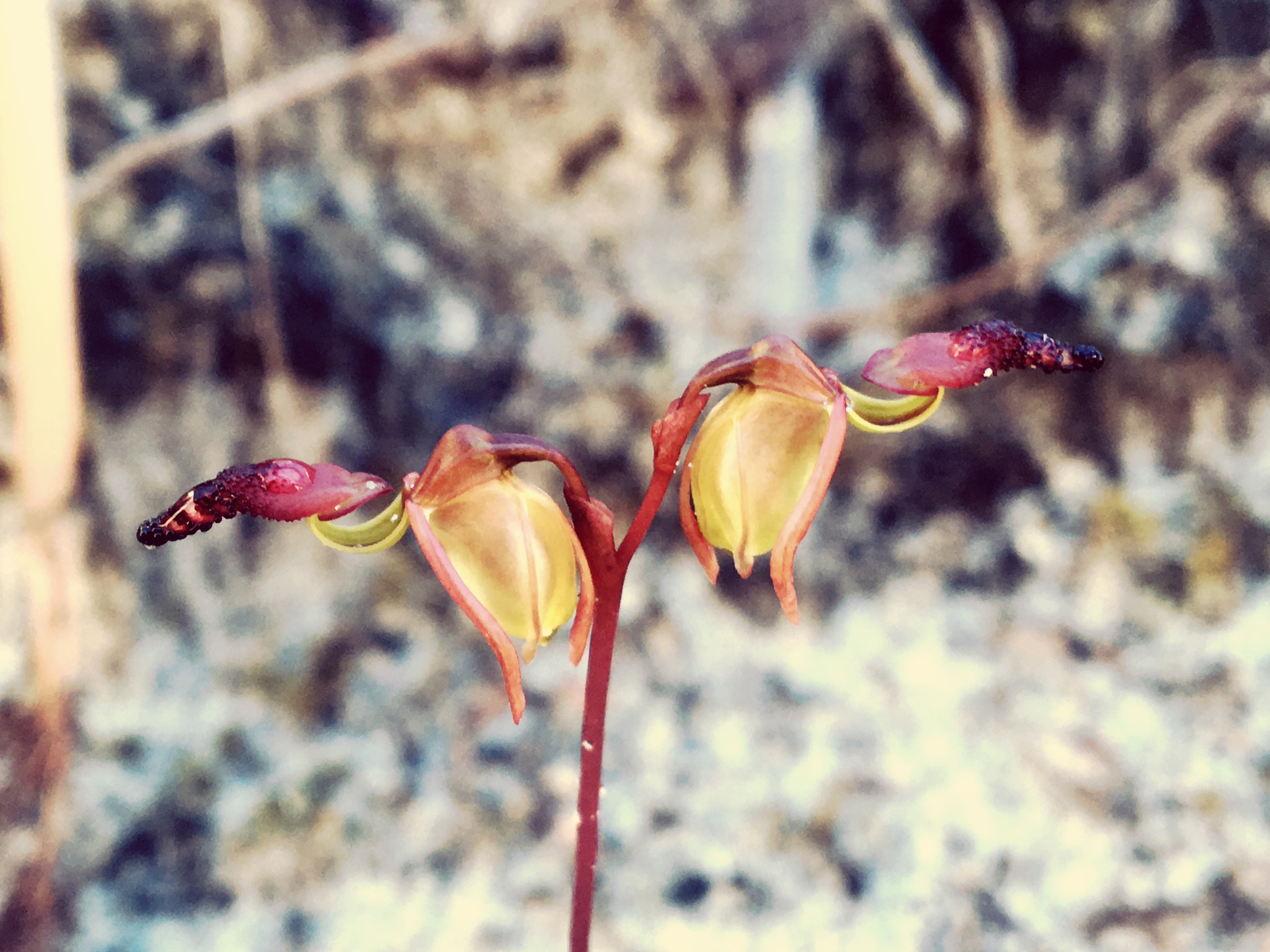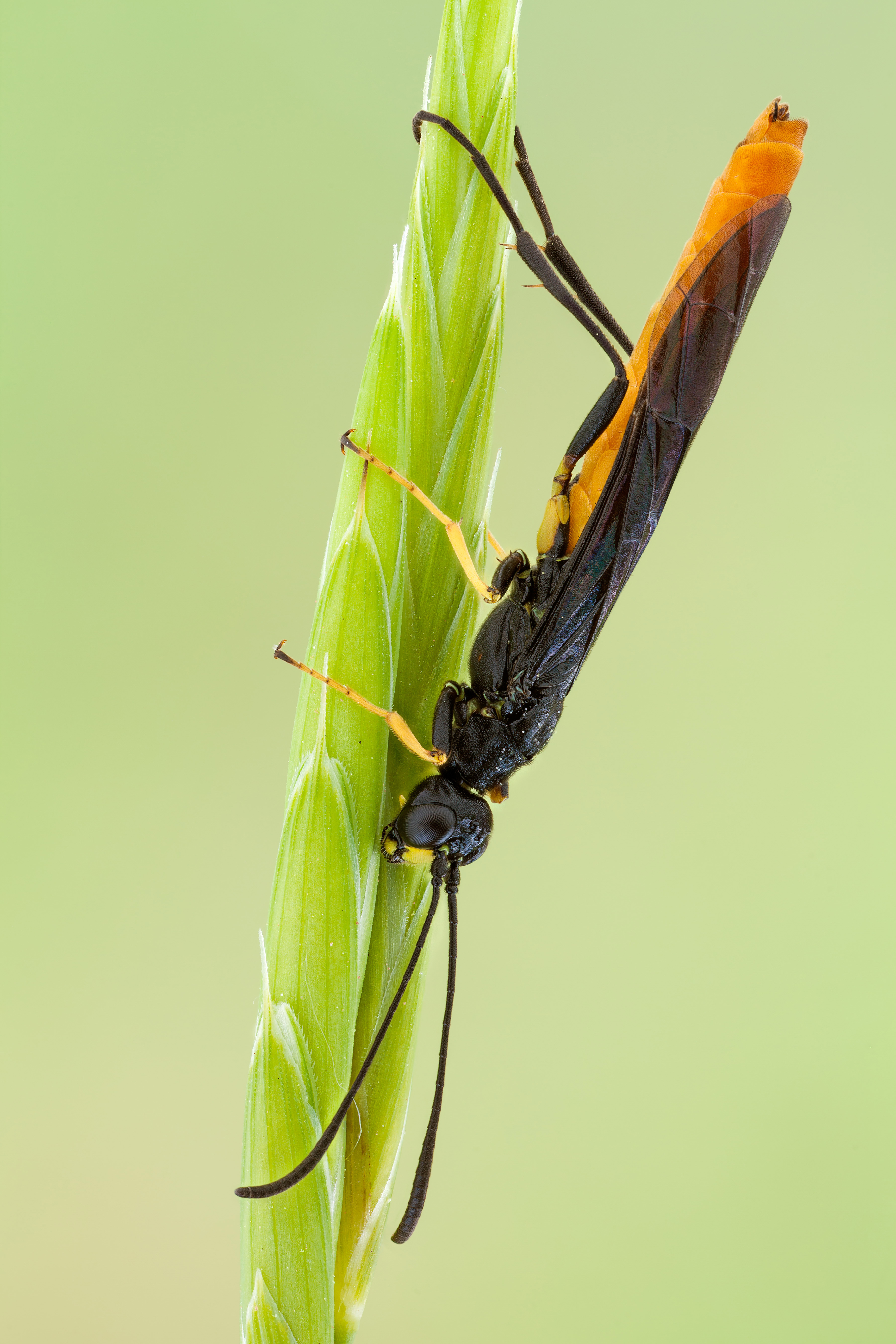Native to Australia, the flying duck orchid is definitely a flower that will impress you with its outstanding appearance and its silent wisdom. The plant produces distinctive duck-like blooms, hence its name.

Flying duck orchid. /VCG Photo
Flying duck orchid. /VCG Photo

Flying duck orchid. The photo was taken in Narrikup, Australia. /VCG Photo
Flying duck orchid. The photo was taken in Narrikup, Australia. /VCG Photo

Sawflies are insects belonging to suborder Symphyta of the order Hymenoptera. The common name comes from the saw-like appearance of the ovipositor, which the females use to cut into the plants where they lay their eggs. /VCG Photo
Sawflies are insects belonging to suborder Symphyta of the order Hymenoptera. The common name comes from the saw-like appearance of the ovipositor, which the females use to cut into the plants where they lay their eggs. /VCG Photo
But there is much more to this lovely plant than its impressive looks. It's quite smart! The plant is especially attractive to male sawflies who always mistaken the plant as a female sawfly. So when a sawfly lands on the orchid's "beak," the plant would force the poor sawfly to pass through the pollen before its escaping. In this way, the flying duck orchid can assure that its pollen will be spread elsewhere. Smart, isn't it?

Flying duck orchid. /VCG Photo
Flying duck orchid. /VCG Photo
However, it's not very easy to see wild flying duck orchid. It has been listed on Australia's vulnerable plant list. But you can see the illustrations of the plant on Australian stamps. Since 1986, the Australian government has started releasing the stamps featured on the flying duck orchid, alone with other vulnerable plants in the country.
About 'Plants & Nations'
"Plants & Nations" is a series of articles and pictures about common plants in the world. It serves as a guide to beautiful plants from different countries.
For more articles, please click here:
Plants & Nations
(All photos are from VCG and edited by Ding Qian.)
(If you want to contribute and have specific expertise, please contact us at nature@cgtn.com.)